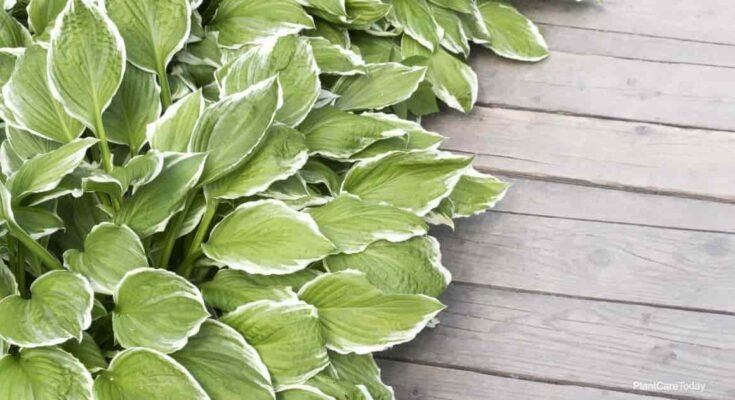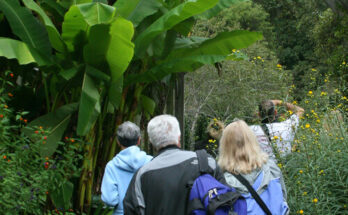Hostas are herbaceous perennial members of the Asparagaceae family of plants and are native to China and Japan. They have adapted nicely to life in the United States and are winter hardy in USDA hardiness zones 3 to 9.
There are 70 Hosta species and more than 3000 different varieties. Most hostas are grown for their attractive foliage rather than their smallish and nondescript blooms.
These plants do well in partial shade with light, airy, well-draining soil and can tolerate a wide range of pH levels.
For this reason, many garden plants make good Hosta companions.
In this article, we review the top 7 Hosta companion plants. Read on to learn more.
Hosta Companion Plants: Early Season Beauties
Even though there are many types of Hosta to choose from, and you could create an interesting garden with nothing but a collection of Hostas, the interest would be late and short-lived
Hostas don’t usually emerge until late in the spring. If they are going to produce blooms, these usually don’t appear until the end of summer.
To add interest to your garden from early spring until late autumn, it’s a good idea to add some attractive companion plants to the mix.
Here are the top 7 Hosta companion plants:
Lady’s Mantle
Lady’s Mantle (Alchemilla) is a pretty perennial with slightly fuzzy, deep green leaves that look like geranium.
This plant produces generous bunches of tiny, bright greenish-yellow blooms early in the summertime.
These are excellent additions to bouquets to be taken indoors.
Perennial Geraniums
Perennial or “wild” Geraniums are very rugged and easy to care for. They can grow happily in lighting conditions ranging from full sun to partial shade.
Wild geraniums have a mounded growth habit, lacy medium green foliage, and wine-cup-like flowers in shades of white, blue, lavender, maroon, and magenta.
They begin blooming late in the springtime and continue into the autumn months.
Spurge (Euphorbia)
Spurge (Euphorbia) also displays a mounded growth habit.
It contrasts with wild geraniums and Hostas because of its showy foliage that comes in shades of chartreuse, greenish-blue, bright orange, and deep burgundy.
Barrenwort (Epimedium)
Barrenwort (Epimedium) produces small clusters of white, pink, violet, or yellow flowers early in spring.
The plants’ pretty heart-shaped leaves are variegated in maroon and lime green shades.
Lungwort (Pulmonaria)
Lungwort (Pulmonaria) is a low-growing plant with slightly fuzzy, small leaves and clusters of tiny, bell-shaped blooms.
The interesting foliage is deep green, tear-drop shaped, and splashed with silvery markings.
The blooms come in shades of blue, purple, and pink. All colors may be present on one plant.
Astilbe
Astilbe creates an attractive dark and bright contrast. This plant has deep green, serrated-edged leaves that grow in three groupings.
Standing atop this dark background are tall stalks adorned with fluffy plume-like blooms in dazzling shades of white, pink, violet, or red.
Foam Flower (Tiarella)
Foam Flower (Tiarella) is native to the United States.
It is like Heuchera or Coral Bells (also a good Hosta companion), but it is a bit more subtle and tougher when it comes to enduring hot, humid climates.
For this reason, Tiarella is a good choice as a Hosta companion in the southern states.
This ground cover has medium green leaves that somewhat resemble maple leaves.
The dainty white or pink blooms are bottle brush shaped and stand above the foliage on slender stalks late in the springtime.
Bring Interest, Fragrance & Pollinators To Your Shady Place Garden
Many plants make good Hosta companions. In addition to the rugged perennials suggested here, consider spring flowering bulbs, such as:
- Alliums
- Narcissus
- Tulips
- Fritillaria
- Muscari
When choosing, look for plants that will do well in your geographic area, and under the conditions Hosta enjoys.
For example, plants like partial to full shade and light, well-draining soil will do well with Hostas.
There are so many plants that can do very well in these conditions that there is really no limit on the number of interesting combinations you can create.
Source link
Originally posted 2022-08-17 15:03:29.





